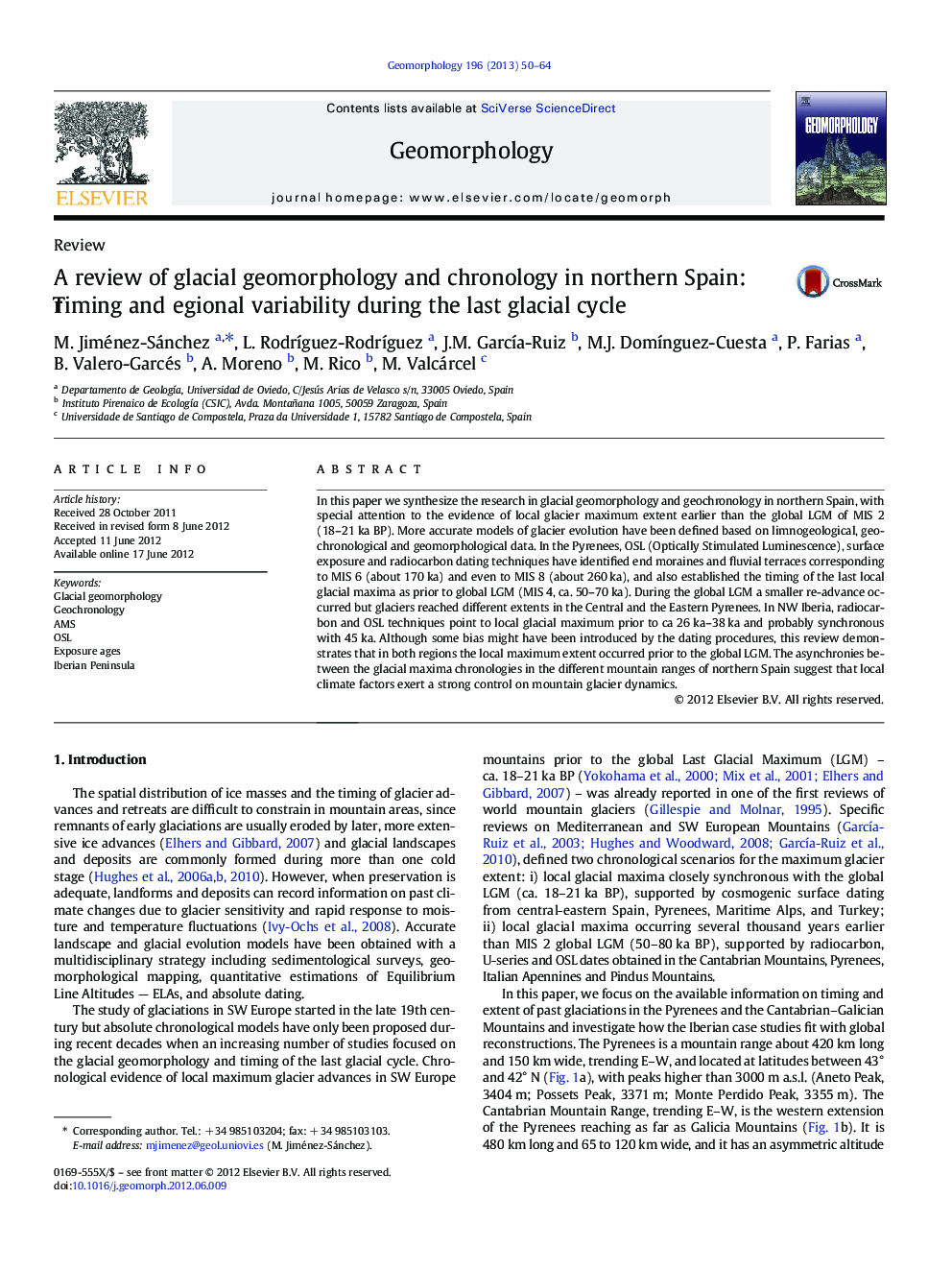| کد مقاله | کد نشریه | سال انتشار | مقاله انگلیسی | نسخه تمام متن |
|---|---|---|---|---|
| 4684852 | 1635453 | 2013 | 15 صفحه PDF | دانلود رایگان |
In this paper we synthesize the research in glacial geomorphology and geochronology in northern Spain, with special attention to the evidence of local glacier maximum extent earlier than the global LGM of MIS 2 (18–21 ka BP). More accurate models of glacier evolution have been defined based on limnogeological, geochronological and geomorphological data. In the Pyrenees, OSL (Optically Stimulated Luminescence), surface exposure and radiocarbon dating techniques have identified end moraines and fluvial terraces corresponding to MIS 6 (about 170 ka) and even to MIS 8 (about 260 ka), and also established the timing of the last local glacial maxima as prior to global LGM (MIS 4, ca. 50–70 ka). During the global LGM a smaller re-advance occurred but glaciers reached different extents in the Central and the Eastern Pyrenees. In NW Iberia, radiocarbon and OSL techniques point to local glacial maximum prior to ca 26 ka–38 ka and probably synchronous with 45 ka. Although some bias might have been introduced by the dating procedures, this review demonstrates that in both regions the local maximum extent occurred prior to the global LGM. The asynchronies between the glacial maxima chronologies in the different mountain ranges of northern Spain suggest that local climate factors exert a strong control on mountain glacier dynamics.
► This paper updates the glacial record (geomorphology and geochronology) in N Spain.
► Evidence of local glacial maximum earlier than the global LGM of MIS 2 is reported.
► In Pyrenees, last local glacial maxima is coeval to MIS 4, ca. 50–70 ka.
► Evidence in NW Iberia points to local glacial maxima prior to ca 26 ka–38.
► Asynchronies between the chronologies suggest a strong control of local climate.
Journal: Geomorphology - Volume 196, 15 August 2013, Pages 50–64
